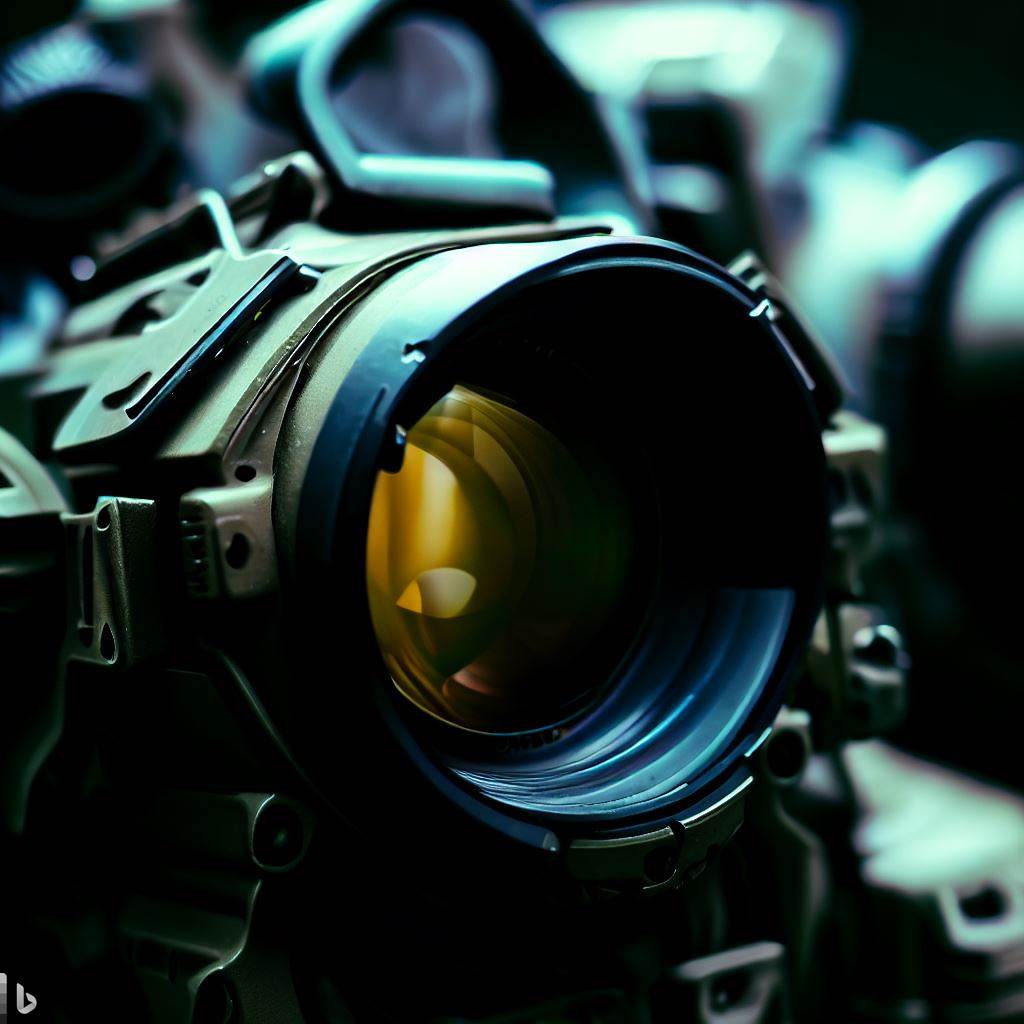

Night vision equipment can provide valuable visibility in low light conditions, allowing you to see clearly even when it’s dark. However, it’s important to take the necessary safety precautions to ensure your well-being while using such equipment.
In this article, we will explore some important safety measures to keep in mind when using night vision gear, helping you make the most of its benefits while staying safe.
Preparing for Night Vision Equipment Usage
Ensure Proper Training And Familiarization
Before using night vision equipment, it is crucial to undergo proper training and familiarize yourself with its operation. Night vision devices can vary in terms of their functions and controls, so understanding how to use the specific equipment you have is essential.
Training can provide you with the necessary knowledge and skills to effectively and safely operate the equipment, ensuring an optimal user experience.
Check Equipment For Potential Defects Or Damage
Before each use, it is important to thoroughly inspect your night vision equipment for any potential defects or damage. Check for any cracks, loose fittings, or signs of wear and tear. Ensure that all buttons, switches, and lenses are functioning properly.
By regularly checking your equipment, you can identify any issues early on and address them before they impact your usage or safety.
Secure Necessary Permits or Clearances
Depending on your location and intended use, you may need to obtain permits or clearances to legally operate night vision equipment. Certain jurisdictions may have restrictions or regulations in place to ensure the responsible and safe use of these devices.
Research the laws and regulations in your area and obtain the necessary permits or clearances to avoid any legal complications.
Protecting Your Eyes
Avoid Shining Bright Lights Directly Into The Goggles
Night vision goggles amplify available light, allowing you to see in low-light conditions. However, shining bright lights directly into the goggles can damage the intensifier tubes and potentially harm your eyes. Always avoid pointing flashlights, laser pointers, or any other bright light source directly into the goggles to protect both your eyes and the equipment.
Use Eye Protection in Brightly Lit Areas
When using night vision equipment in brightly lit areas, such as well-lit rooms or areas with streetlights, it is important to use eye protection. Night vision devices can amplify ambient light, which can be overwhelming in bright environments.
Wearing eye protection, such as sunglasses or specialized filters, can help reduce the strain on your eyes and prevent potential discomfort.
Allow Your Eyes To Adjust To The Dark Before Using
Night Vision Devices
Before activating your night vision device, allow your eyes to adapt to the darkness. This process, called dark adaptation, allows your eyes to become more sensitive to low-light conditions. By giving your eyes time to adjust, you can enhance the effectiveness of your night vision equipment and minimize eye strain.
Ensuring Personal Safety
Be Aware of Your Surroundings
When using night vision equipment, it is crucial to maintain awareness of your surroundings. Low light conditions can pose their own set of challenges, such as limited visibility and reduced depth perception. Stay vigilant, observe your surroundings carefully, and be alert to potential obstacles or hazards to ensure your personal safety.
Use Night Vision Equipment According To The Manufacturer’s Instructions
Each night vision device may have specific guidelines and instructions provided by the manufacturer. It is essential to familiarize yourself with these instructions and use the equipment in accordance with them. Following the manufacturer’s recommendations will not only optimize your experience but also ensure your safety while using the night vision device.
Avoid Unnecessary Movement And Stay Balanced
Using night vision equipment in low-light conditions can affect your balance and depth perception. To avoid accidents or falls, minimize unnecessary movement and remain balanced. Use caution when walking or navigating unfamiliar terrain, especially when relying solely on your night vision device to see in the dark.
Maintaining Operational Safety
Regularly Inspect and Maintain Night Vision Equipment
To ensure operational safety, it is important to regularly inspect and maintain your night vision equipment. Regular inspections can help identify any potential issues or deficiencies early on. Clean the lenses and optics regularly to maintain optimal performance, and address any problems promptly to prevent further damage or compromised safety.
Ensure Proper Battery Management
Most night vision devices rely on batteries for power. To maintain operational safety, ensure proper battery management. Before each use, check the battery levels to ensure they are adequately charged. Regularly replace old or weak batteries to prevent unexpected device failure in low-light environments.
Avoid Excessive Exposure to Extreme
Temperatures
Night vision devices can be sensitive to extreme temperatures. Protect your equipment from excessive heat or cold, as it can affect performance and potentially damage sensitive components. Store your night vision equipment in a controlled environment and avoid exposing it to extreme temperature conditions.
Safeguarding Against Hazards
Avoid Using Night Vision Equipment while Driving or Operating Heavy Machinery
Night vision equipment is designed for stationary or slow-moving activities in low-light conditions. It is not suitable for use while driving or operating heavy machinery. The restricted field of view and altered depth perception can pose a significant risk in these scenarios.
Always prioritize safety and avoid using night vision equipment in situations that require high levels of situational awareness and rapid reactions.
Be Cautious With Infrared Illuminators
Some night vision devices are equipped with infrared illuminators, which emit invisible infrared light to enhance visibility in complete darkness. While these illuminators can be useful, exercise caution when using them.
Be mindful of potential eye hazards and avoid pointing the illuminator directly at people or reflective surfaces that may cause a glare.
Minimize The Risk Of Accidental Exposure
Night vision equipment can emit visible or invisible infrared light that may inadvertently expose your position. To minimize the risk of accidental exposure, avoid prolonged use in a single location, especially in situations where stealth or concealment is important.
Use your night vision device responsibly, ensuring that your activities do not compromise your safety or the safety of others.
Protecting Equipment From Damage
Use Protective Cases And Covers
Night vision equipment can be fragile and susceptible to damage. When not in use, store your equipment in protective cases or covers specifically designed for your device. These cases provide a safe and secure environment, shielding your equipment from dust, moisture, and potential impacts.
Avoid Dropping Or Impacting The Night Vision Device
Accidental drops or impacts can significantly damage night vision equipment and compromise its performance. Handle your device with care and avoid subjecting it to unnecessary bumps or shocks. By taking precautions to prevent accidental damage, you can extend the lifespan of your equipment and maintain its effectiveness.
Clean Optics Properly And Regularly
Clean optics are vital for optimal performance and image quality of night vision devices. Regularly clean the lenses and optics of your equipment following the manufacturer’s guidelines. Use specialized lens cleaning solutions and gentle cleaning tools to remove dust, fingerprints, or other debris. Avoid using harsh chemicals or abrasive materials that could scratch or damage the optics.
Preserving Night Vision Capability
Monitor and Adjust Display Settings Appropriately
Night vision devices may have adjustable display settings to optimize the image quality and brightness. Monitor and adjust these settings appropriately to ensure clear and comfortable visibility. Avoid unnecessarily intensifying the image, as it may cause eye strain or reduce the device’s overall lifespan.
Limit Exposure To Excessive Light Sources
Prolonged exposure to bright light sources, such as headlights or searchlights, can degrade night vision capabilities. Minimize exposure to excessive light sources to maintain the sensitivity of your night vision device. Shield your eyes and the device from direct exposure whenever possible.
Avoid Continuous Use For Prolonged Periods
Night vision devices are designed for intermittent use in low-light conditions. Continuous use for extended periods can increase the risk of overheating and may affect the performance and lifespan of the device. Allow your night vision device to cool down between uses, and avoid prolonged usage whenever possible.
Working In Teams Or Groups
Establish Clear Communication Protocols
When working with others using night vision devices, establish clear communication protocols. Use hand signals, radios, or other non-verbal methods to communicate effectively while minimizing noise. Clear communication can enhance situational awareness and mitigate potential safety risks.
Coordinate Night Vision Device Usage To Prevent Accidental Injury
If multiple individuals are using night vision devices, it is important to coordinate their usage to prevent accidental injury. Be aware of each other’s positions and activities to avoid collisions or disruptions. Coordinate movements and share information to maintain a cohesive and safe group dynamic.
Buddy System And Regular Check-Ins
Implementing a buddy system can enhance safety when using night vision equipment in low-light conditions. Assigning a partner can help ensure that you are both accounted for and can promptly respond to emergencies or potential hazards. Establish a regular check-in schedule to maintain constant communication and awareness within the group.
Understanding Legal And Ethical Considerations
Familiarize Yourself With Applicable Laws And Regulations
Night vision equipment usage may be subject to specific laws and regulations in your jurisdiction. Familiarize yourself with these laws and understand the legal requirements for using night vision devices. Ensure that you comply with all applicable regulations to avoid potential legal consequences.
Respect Privacy Rights And Avoid Intrusion
When using night vision equipment, it is important to respect the privacy rights of others. Do not use night vision devices to intrude upon private property or observe individuals without their consent. Use your equipment responsibly and ethically, maintaining the highest standard of privacy and respect for others.
Obtain Consent when Recording Or Sharing Night Vision Footage
Recording or sharing night vision footage may require the consent of those involved. Before capturing or disseminating any recordings, ensure that you have obtained the necessary consent from all parties involved. Be mindful of the content you record and respect the privacy and confidentiality of others.
Being Prepared For Emergencies
Know Emergency Procedures And Signal For Help
In any situation, it is important to be prepared for emergencies. Familiarize yourself with the appropriate emergency procedures and know how to signal for help. Carry a whistle, signal mirror, or other easily accessible signaling devices to alert others if you find yourself in distress.
Carry Backup Lighting Equipment
Night vision equipment can experience technical failures or power outages. To safeguard against these situations, always carry backup lighting equipment, such as flashlights or chem lights. Having alternative light sources readily available can help ensure your safety and provide temporary illumination if your night vision device becomes nonfunctional.
Have a Backup Plan In Case Of Equipment Failure
No matter how well-maintained your night vision equipment is, there is always a possibility of unexpected failure. Have a backup plan in place in case your equipment malfunctions or becomes unusable. This may involve having a secondary night vision device or alternative navigation methods to ensure your ability to continue your activities safely.
Top Night Vision Goggles of 2023: Expert Reviews and Buying Advice
The Ultimate Guide to the Top 5 Night Vision Binoculars for Hunting
Top 5 Night Vision Monoculars for Hunting in 2023 | Best Rating
How Do I Minimize Noise When Using Night Vision For Hunting?





